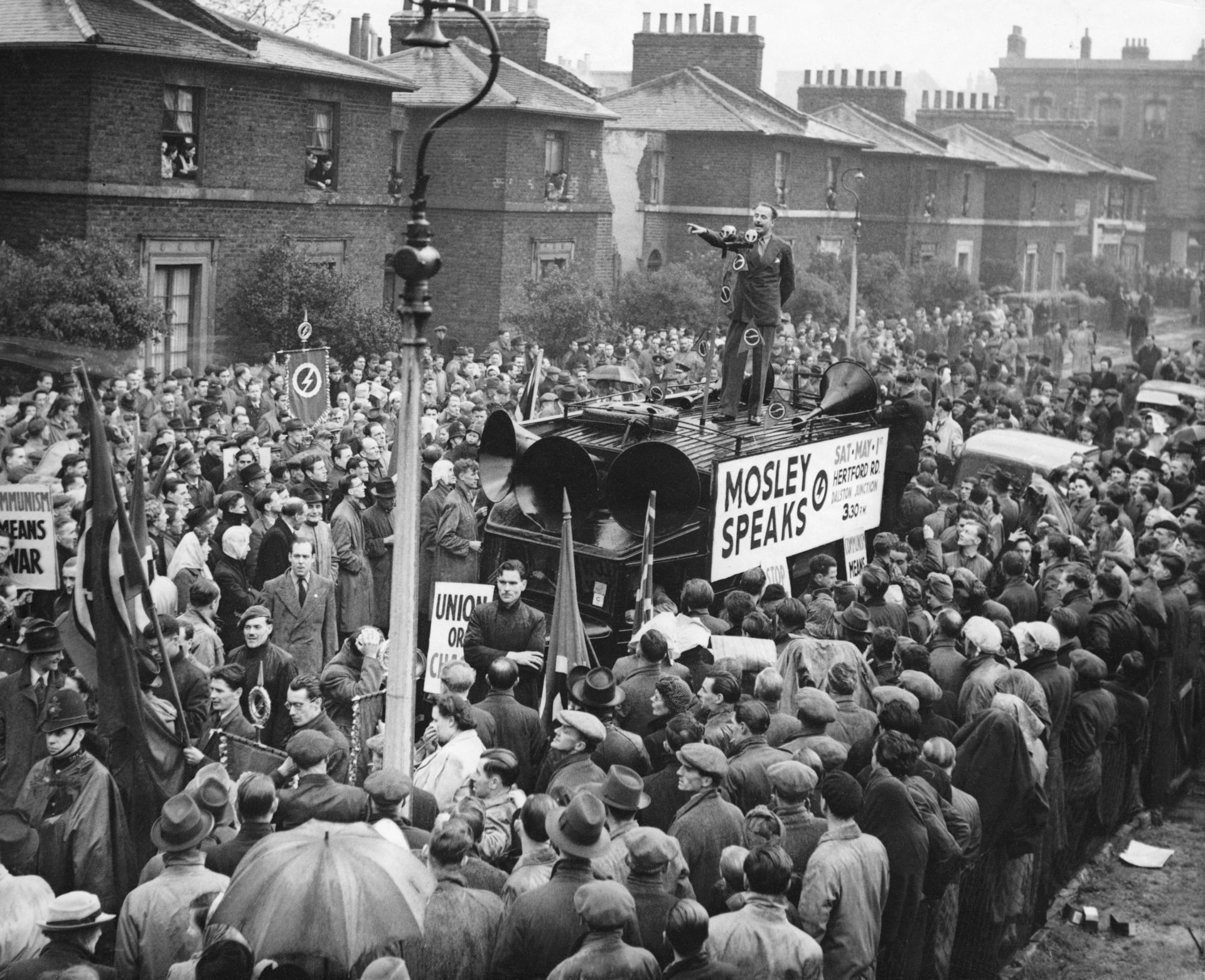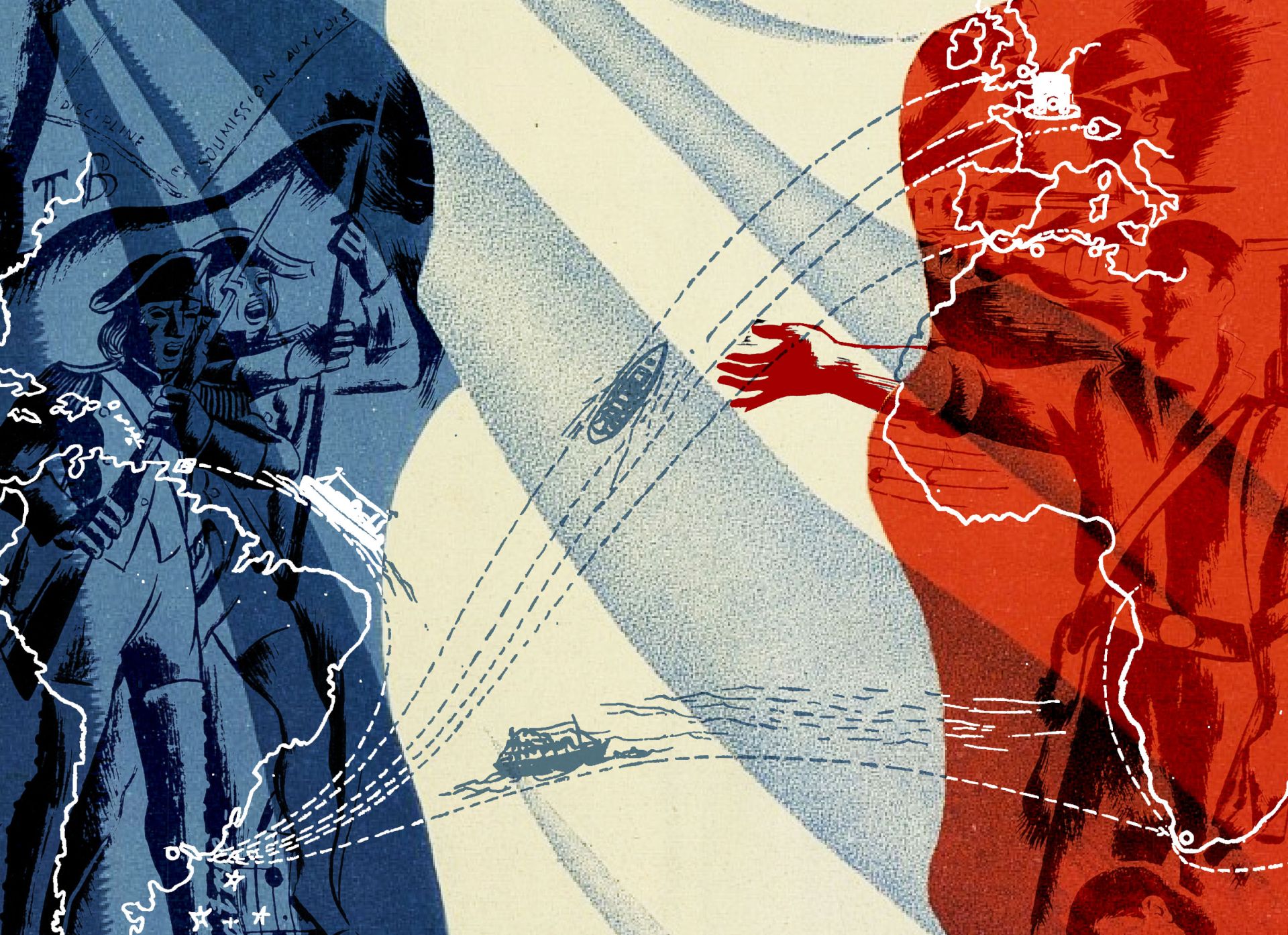
Jun 7, 2024
With US think tanks having already drawn up plans for instituting an authoritarian government under a second Donald Trump administration, the stakes in the year's presidential election are difficult to overstate. Around the world, "strongmen" are turning democratic institutions on themselves and learning from each other.
Over the past decade, Ruth Ben-Ghiat has emerged as one of the English-speaking world’s leading experts on, and chroniclers of, authoritarian leaders in the twenty-first century. A professor of history and Italian studies at New York University and the author of Strongmen: Mussolini to the Present, she warns against complacency in the face of growing threats to democracy around the world.
Project Syndicate: What is your working definition of a twenty-first-century “strongman”? Or more specifically, which contemporary political leaders do you include in this category, and what features do they share?
Ruth Ben-Ghiat: I use the term strongman for authoritarian leaders who damage or destroy democracy using a combination of corruption, violence, propaganda, and machismo (masculinity as a tool of political legitimacy). A strongman’s personality cult elevates him as both a “man of the people” and “a man above all other men.” Authoritarianism is about reorganizing government to remove constraints on the leader – which in turn allows him to commit crimes with impunity – and machismo is essential to personality cults that present the head of state as omnipotent and infallible.
Strongmen, as I define them, also exercise a form of governance known as “personalist rule.” Government institutions are organized around the self-preservation of a leader whose private interests prevail over national interests in both domestic and foreign policy; public office thus becomes a vehicle for private enrichment (of the leader and his family and cronies).
Personalist rule is associated with autocracies. A good example is Vladimir Putin’s Russia, where a kleptocratic economy allows for the systematic plundering of private and public entities for the financial benefit of the leader and his circle. Yet personalist rule can also emerge in degraded democracies when a politician manages to exert total control over his party, develop a personality cult, and exert outsize influence over mass media. That happened in Italy under Silvio Berlusconi (who owned the country’s private television networks and much more) and in America during Donald Trump (through his command of Twitter and his alliance with Fox News).
Because personalist leaders are always corrupt, they and those closest to them usually will be investigated when they come to power in a democracy. In such cases, governance increasingly revolves around their defense. More party and civil-service resources will be devoted to exonerating the leader and punishing those who can harm him, such as judges, prosecutors, opposition politicians, and journalists. In the United States, the Republican Party has lent itself fully to this personalist endeavor. The House Subcommittee on the Weaponization of Government, chaired by Trump loyalist Jim Jordan, is just one example of a government mechanism created for the sole purpose of targeting anyone who threatens the leader.
Even where investigating the leader is no longer possible, as in Recep Tayyip Erdoğan’s Turkey, a formidable army of lawyers, trolls, bureaucrats, and others will sustain the leadership cult and watch for any cracks in the armor. Hence, the Turkish government spends considerable time and public funds pursuing tens of thousands of “insult suits” against Erdoğan’s critics.
Finally, while democratic leaders can be deeply flawed as individuals, the strongman’s corruption and paranoia ineluctably leads him to develop highly dysfunctional governance structures such as “inner sanctums” composed of sycophants, family members, and advisers chosen for their loyalty rather than their expertise. As a result, strongmen will gradually come to lack the proper objective input to make reasoned decisions. Their impulsive and mercurial personalities will make their cabinets a circus of hirings and firings, with the chaos further drowning out sound advice. Trump, who made his daughter and son-in-law top advisers, is in this lineage. “I’m speaking with myself, number one, because I have a very good brain and I’ve said a lot of things,” he said in 2016, when asked who advises him on foreign policy. When the strongman is ripe to be overthrown, he may be the last to know.
PS: Would you also include those CEOs and business leaders who, like Elon Musk, wield absolute power within their organizations?
RBG: There are many “little tyrants” in business who create decision-making structures that are beholden to their whims, and who dwell in a semi-fantasy environment rooted in their demands for loyalty. Adam Neumann, the former CEO of WeWork, is a good example. Of course, corporate leaders generally must answer to boards of directors and other fiduciary structures that exist to preserve the integrity and profits of the business entity; that is why Neumann eventually was removed. But this does not always happen, as the case of Musk (at Tesla) shows.
NORMALIZING EXTREMISM
PS: How should we understand Trump’s evolution since he first announced his presidential candidacy in June 2015? In what ways has he become more dangerous, and in what ways has he become simply a “known quantity”?
RBG: Trumpism started in 2015 as a movement fueled by conservative alarm and white rural rage at a multiracial and progressive America. It continued as an authoritarian presidency – what Trump’s advisers envisioned as a “shock to the system” – that unleashed waves of hate crimes against non-whites and non-Christians. It then reached a new stage with the January 6, 2021, assault on the Capitol, which deployed violence not just to keep Trump in office, but also to keep Vice President-elect Kamala Harris and other representatives of social and racial progress from taking power.
Normalizing extremism has been critical to this success. Trump has worked very hard to condition Americans to accept authoritarianism as a superior form of government, and this emotional re-training has proceeded along several vectors. For example, he has sought to change perceptions of political violence, using his rallies since 2015 to market it as necessary and justified – the preferred way to deal with differences. He has also repeatedly praised dictators around the world in an effort to change Americans’ perceptions of tyrants. And he has led a massive, concerted campaign to delegitimize democratic leaders and institutions, from elections and the courts to the free press. All are depicted as inefficient, corrupt, and dangerous.
Trump surveyed the political marketplace and made himself into an exponent of the causes and emotions that he felt American politics was neglecting. He identified and named a new constituency: the “forgotten” – white rural and exurban working-class voters whom Democrats had ignored. He told them he loved them, proclaimed himself their savior, and made himself a victim on their behalf. None of this is new for authoritarian politics, but it was new for America, given the scale it has reached.
PS: There is a long-running debate over whether Trump is more of a symptom or a cause, with the “symptom” camp arguing that a similar politician would fill the void were Trump to exit the stage. Do you agree with that, or is there something uniquely compelling about a figure like Trump (or historical antecedents like Mussolini)?
RBG: Strongmen use their personality cults to proclaim their uniqueness. As individuals, they are indeed innovators in repression and communication, capable of presenting themselves as the symbols of all that is most wanted at the moment (safety from racial enemies, protection from leftist anarchy and globalists abroad, and so forth). They can connect on an emotional level with their followers. Nazis felt that Hitler was speaking directly to them and expressing things they had not known how to articulate, and you can find many quotes from people at Trump rallies who feel the same way about their leader.
But the strongman also breeds imitators (in Nazi Germany they were known as “mini-Hitlers”). Though these figures are often hated by the people, even as the original remains loved, they perform an important function by institutionalizing the tyrant’s values and style. Sometimes, however, a strongman can become too much of a liability for a country’s conservative elites, so support builds for someone who is equally extreme but appears and sounds more acceptable.
This happened in the Philippines, where former President Rodrigo Duterte’s loose-cannon pronouncements about killing people earned him an International Criminal Court investigation and bad press for the country. That created an opening for the current president, Ferdinand “Bongbong” Marcos, Jr., the son of the former dictator, Ferdinand Marcos. Bongbong is a known quantity to the country’s elites, and he is much more respectable on the surface. When Duterte resigned to help his own daughter be elected as vice president, the Marcos family returned to power. That is how the legacy of dictatorship is institutionalized and normalized.
In the US, Florida Governor Ron DeSantis was supposed to be the more polished extremist that Republicans could use to ditch Trump (along with all of his legal and other baggage). But DeSantis proved unsuitable. Although his autocratic leadership style and repressive policies were just fine for the GOP, he was too unlikeable, and his personality too wooden. Some also hoped that Nikki Haley could assume this role (and she has continued to get votes in primaries even after dropping out of the race). The maxim once applied to Berlusconi is applied to Trump: there is no alternative.
PS: What will it mean for America if Trump wins in November? Do you agree with The Washington Post’s Robert Kagan that America would become a “dictatorship”?
RBG: To understand the stakes of this year’s election, one need only read The Heritage Foundation’s Project 2025, a neutrally named plan for converting America into an autocracy, and listen to what Trump says he will do to America and Americans. I was one of the very first to see Trump as an authoritarian, and I have seen nothing to give me comfort since then. In a January 2017 CNN commentary, I predicted how he would behave in office. Unfortunately, my warnings proved accurate in every detail, from his attacks on judges and the press, to his efforts to delegitimize institutions and cultivate a personality cult.
I have no doubt that Trump would try to exert dictatorial power so that he could end his legal troubles and repress his critics and investigators without consequences. He will continue to turn party structures into vehicles for personal enrichment. The Republican National Committee had already been paying his personal legal expenses long after he left office, and now his daughter-in-law, Lara Trump, is its co-chair.
Meanwhile, Trump’s enablers at Project 2025 have been working for years to facilitate his destruction of democracy. It is telling that they see an “existential need for aggressive use of the vast powers of the executive branch.” Dictators always justify their crackdowns as necessary responses to some kind of national emergency. Now add Trump’s quest to achieve personal immunity for any crimes he will commit, his efforts to attract more unscrupulous cronies by promising pardons, and his vow to grant police officers immunity from prosecution. It becomes easy to see how the rule of law would be transformed into rule by the lawless, with Trump as chief thug.
THE ILLIBERAL INTERNATIONAL
PS: Why did the MAGA movement identify so eagerly with Hungarian Prime Minister Viktor Orbán, rather than with other figures like Jarosław Kaczyński in Poland (before his party’s recent ouster from power)?
RBG: Orbán has an unusual history. I call him the strongman “made in America and Hungary.” Having lost re-election as prime minister in 2002 to a Socialist coalition, he embarked on a journey of reinvention as a far-right politician. In 2008, Binyamin Netanyahu, then the leader of the opposition in Israel, introduced Orbán to Arthur Finkelstein, a Republican political consultant who specialized in crafting campaigns designed to spark anger and fear in voters and polarize the electorate.
It was Finkelstein, along with his protégé George Birnbaum, who created the villainous “George Soros” of the right’s imagination, turning the billionaire defender of democracy into an all-powerful exploiter and predator. Orbán was back in power two years later, and “George Soros,” the anti-Semitic creation of two American Jews, has helped him to stay there ever since.
Orbán has portrayed himself as a defender of white Christian civilization against “globalists,” a talking point that is now central to GOP platforms, too. The GOP is also enamored with “illiberal democracy,” Orbán’s slogan for a model of governance in which elections are free but unfair, because they are weighted to produce the desired results. He and his party have done this through domination of the media, so that opposition candidates’ messages don’t really reach voters outside of big cities; and through purges of non-loyalists from the judiciary and the electoral apparatus, so that any challenges to results can be turned back swiftly.
While we hear about people falling out of windows or being poisoned in Russia, Orbán relies on more surreptitious forms of threat and pressure. That makes him palatable to suit-wearing extremists such as The Heritage Foundation’s president, Kevin Roberts, who wants autocracy without seeming to dirty his hands. Owing to Hungary’s captured press, we don’t know the full back story of how Orbán persuaded owners of 500 media properties to “donate” their assets “voluntarily” to a government-allied foundation in 2018. But it is pretty easy to see why he became the poster boy for MAGA, and for far-right elites who work behind the scenes more broadly.
“It’s like we’re twins,” Trump exclaimed when he hosted Orbán at the White House in 2019. After a few years of Trump, America could indeed resemble Hungary.
PS: According to many commentators, Italian Prime Minister Giorgia Meloni has transformed herself into more of a moderate, mainstream politician, despite leading a party with fascist roots. What do you say to that?
RBG: I am not among those who see Meloni as a moderate. She is a far-right militant who presents herself as a conservative abroad while staying silent when Mussolini sympathizers salute Il Duce publicly in Italy. Meloni plays a double game. On foreign-policy issues, she takes pro-democratic positions (notably on helping Ukraine) that keep Italy in good standing with its funders at the European Union. That quiets the conservative elites and technocrats at home, giving her a freer hand to pursue an authoritarian agenda domestically.
That agenda includes restricting reproductive and LGBTQ rights (she is for the “natural” family of one man and one woman, and does not support same-sex marriage or adoptions by same-sex couples); revising the constitution to strengthen the executive; and using her position to attempt to shut down critics with lawsuits. For example, she is suing the eminent (81-year-old) classicist Luciano Canfora for calling her a “neo-Nazi at heart” six months before she took office, and her lawyer in this venture is the sitting minister of justice.
PS: Which is more dangerous, a deeply unpopular strongman or a popular one? On the one hand, Netanyahu is so desperate to avoid prosecution that he seems willing to do just about anything to stay in power. On the other hand, Salvadoran President Nayib Bukele has trampled on civil and human rights, but boasts a sky-high approval rating.
RBG: As I write in Strongmen, the most dangerous authoritarian is the one who can no longer risk removal from power. That is the factor that matters most. Since leaving office usually means meeting a bad end – in the form of prosecution, exile, jail, or worse – a leader in this desperate position will do anything to stay in power.
Netanyahu is indeed a case study. First, he allied with extremists like Itamar Ben-Gvir (who was previously convicted on charges of supporting terrorism) to return to power and avoid prosecution. Then, he tried to push through a self-serving “judicial reform” that sparked mass protests in Israel. Now, he wants to expand his war with Hamas. Ami Ayalon, the former head of Shin Bet (the internal security service), recently stated outright that Netanyahu would gladly prolong the war to avoid leaving office, since thousands of Israelis continue to protest against him and demand his resignation.
The recent round of purges to the Israeli defense leadership may have been a move to clean house as punishment for intelligence failures before the October 7 attacks. But it bears mentioning that dismissing insiders is also something autocrats do when they feel their power is threatened.

RUTH BEN-GHIAT
Writing for PS since 2019
6 Commentaries
Ruth Ben-Ghiat, Professor of History and Italian Studies at New York University, is the author of Strongmen: Mussolini to the Present (W.W. Norton & Company, 2020).






